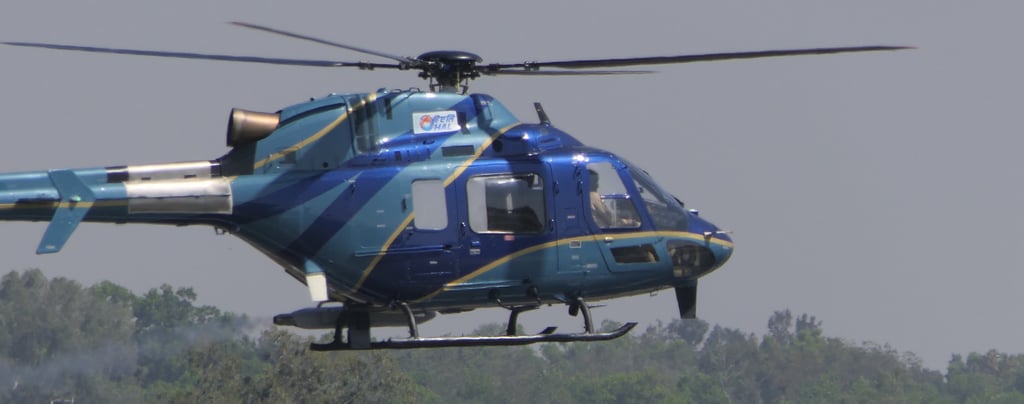Indian Armed Forces Seek Advanced Reconnaissance and Surveillance Helicopters: HAL’s LUH in the Spotlight
NEWS
8/8/20254 min read


The Indian Ministry of Defence has issued a Request for Information (RFI) to replace its aging fleet of Chetak and Cheetah helicopters with modern Reconnaissance and Surveillance Helicopters (RSH). This initiative, detailed in a comprehensive document, aims to enhance the operational capabilities of the Indian Army and Air Force with a total requirement of 200 helicopters (120 for the Army and 80 for the Air Force). The RFI outlines stringent technical and operational requirements, emphasizing versatility, high-altitude performance, and indigenous manufacturing through partnerships and Transfer of Technology (ToT). Among the potential contenders, Hindustan Aeronautics Limited’s (HAL) Light Utility Helicopter (LUH) stands out as a strong candidate due to its indigenous design and alignment with India’s self-reliance goals.
Background and Objectives
The Chetak and Cheetah helicopters, based on the French Alouette series, have served the Indian Armed Forces for decades but are now outdated. The RFI underscores the urgent need for modern light helicopters capable of performing multiple roles, including reconnaissance, surveillance, troop transport, casualty evacuation, and support for civil authorities. The new RSH helicopters must operate effectively in diverse environments, from dusty and saline conditions to high-altitude regions, meeting the Indian Reference Atmosphere (IRA) standards, which include temperatures up to ISA +20°C and altitudes up to 6,000 meters.
The procurement process follows the Defence Acquisition Procedure (DAP) 2020, emphasizing a ‘Single Stage-Two Bid System’ and a ‘No Cost No Commitment’ trial evaluation. The government encourages partnerships with Indian companies, including joint ventures and local production, to boost indigenous manufacturing and align with the ‘Make in India’ initiative.
Key Operational and Technical Requirements
The RFI details a broad spectrum of requirements for the RSH helicopters, ensuring they meet the demanding needs of the Indian Armed Forces. Key operational roles include:
Reconnaissance and Surveillance: Equipped with advanced avionics and surveillance systems for real-time intelligence gathering.
Troop Transport: Capability to carry small Quick Reaction Teams for special missions.
Casualty Evacuation: Configurable for medical evacuation with provisions for stretchers and medical attendants.
High-Altitude Operations: Performance at altitudes up to 6,000 meters with payloads, critical for operations in regions like the Himalayas.
Weapon Integration: Ability to mount weapon stations for rockets, podded guns, or anti-tank missiles, with potential for Manned-Unmanned Teaming (MUM-T) with drones.
Night Operations: Compatibility with Night Vision Goggles (NVG) and infrared landing lights for aided and unaided night flying.
Technical specifications include twin-engine configurations, crashworthy designs, advanced avionics with Software Defined Radios (SDR), and protection against ballistic and environmental threats. The helicopters must also comply with Military EMI/EMC standards and be certified by internationally accredited agencies, with provisions for integration with India’s NAVIC navigation system.
HAL’s Light Utility Helicopter (LUH): A Strong Contender
HAL’s Light Utility Helicopter (LUH), developed under the Indigenous Design and Development (IDDM) category, aligns closely with the RFI’s requirements. Designed to replace the Chetak and Cheetah fleets, the LUH is a single-engine, 3.12-ton helicopter powered by the Shakti-1U engine, a joint venture between HAL and Safran Helicopter Engines. Key features of the LUH include:
High-Altitude Performance: The LUH has demonstrated operations at 6,500 meters, meeting the RFI’s high-altitude requirements for missions in mountainous terrains like Siachen.
Versatility: It can carry up to six passengers or a 1,000 kg underslung load, suitable for reconnaissance, troop transport, and casualty evacuation.
Indigenous Content: With over 50% indigenous content, the LUH supports India’s self-reliance goals and DAP 2020’s emphasis on local manufacturing.
Avionics and Safety: Equipped with a Glass Cockpit, Digital Flight Control System, and Health and Usage Monitoring System (HUMS), the LUH meets modern avionics standards. It also features crashworthy seats and a robust airframe.
Production Capability: HAL’s dedicated LUH production facility in Tumakuru, Karnataka, has a capacity to produce 30-40 helicopters annually, scalable to meet the RFI’s demand for 200 units.
The LUH has received Initial Operational Clearance (IOC) and is undergoing trials for military certification by the Centre for Military Airworthiness and Certification (CEMILAC). Its single-engine design, while efficient, may require evaluation against the RFI’s preference for twin-engine configurations for enhanced safety in high-risk missions.
Procurement Process and Vendor Expectations
The RFI outlines a rigorous procurement process, including:
Vendor Response: Vendors must submit detailed technical specifications, product brochures, and responses to a comprehensive questionnaire by October 18, 2025. Responses should address performance in IRA conditions, weapon integration, and maintenance support.
Trials and Evaluation: Shortlisted vendors will undergo a Technical Evaluation Committee (TEC) review, followed by field trials in India on a ‘No Cost No Commitment’ basis.
Indigenous Manufacturing and ToT: The government prioritizes partnerships with Indian companies, requiring vendors to establish production facilities in India and transfer critical technologies, including power plants, rotor systems, and avionics.
Life Cycle Support: Vendors must commit to supporting the helicopters for their 30-year lifespan, including spares, maintenance, and obsolescence management.
The RFI also requests a Rough Order of Magnitude (ROM) cost for budgeting, covering acquisition, maintenance, training, and simulators. HAL’s LUH, with its cost-effective design and local production, could offer a competitive edge in this aspect.
Challenges and Opportunities
The RFI presents both challenges and opportunities for vendors. The stringent high-altitude and environmental requirements demand robust designs, while the emphasis on indigenous content and ToT aligns with India’s push for self-reliance. HAL’s LUH benefits from its indigenous design and existing production infrastructure, but it may face competition from global OEMs like Airbus (H125M), Bell (429), or Leonardo (AW109), which offer twin-engine options and advanced weapon integration.
The LUH’s single-engine configuration could be a limitation in meeting the RFI’s preference for twin engines, particularly for missions requiring redundancy. However, HAL’s ongoing development of the Light Combat Helicopter (LCH) and collaborations with global firms could facilitate upgrades or a twin-engine variant to meet these needs.
Conclusion
The Indian Armed Forces’ RFI for RSH helicopters signals a transformative step in modernizing its aviation capabilities. HAL’s LUH, with its indigenous design, high-altitude performance, and alignment with DAP 2020’s self-reliance goals, is a strong contender. As vendors prepare their responses by October 18, 2025, and participate in the vendor interaction on August 22, 2025, the focus on local production and technology transfer will shape the future of India’s defense manufacturing. The successful bidder will not only supply advanced helicopters but also contribute to India’s vision of a self-reliant defense ecosystem.
